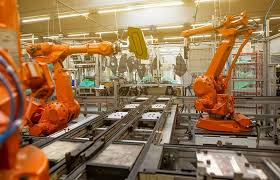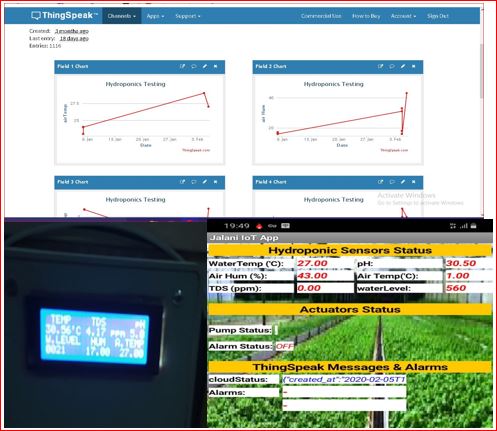Introduction
Imagine a world where factory floors run seamlessly, predicting maintenance needs before breakdowns occur and adjusting workflows on the fly. Sounds like a sci-fi dream? Not anymore. AI (Artificial Intelligence) and IoT (Internet of Things) are revolutionizing assembly line workflows, making them smarter, faster, and more efficient than ever before. But how exactly do these technologies work together to reshape manufacturing? Let’s dive in.
The Traditional Assembly Line: A Bottleneck for Efficiency
Before AI and IoT, assembly lines operated on rigid schedules, often struggling with inefficiencies, downtime, and unexpected failures. Manual monitoring and intervention were necessary to keep production moving. This led to increased costs, wasted resources, and delays. Enter AI and IoT—two game-changing technologies that bring automation and intelligence into the mix.
Understanding AI and IoT in Manufacturing
What is AI in Manufacturing?
AI involves the use of algorithms and machine learning models to analyze data, predict trends, and make autonomous decisions. In assembly lines, AI can detect defects, optimize workflows, and even control robotic arms with precision.
What is IoT in Manufacturing?
IoT refers to the network of smart devices, sensors, and machines that communicate with each other over the internet. These devices collect real-time data, providing insights into machine health, performance, and operational efficiency.
How AI and IoT Work Together in Assembly Lines
When combined, AI and IoT create a smart manufacturing ecosystem where machines “talk” to each other, analyze vast amounts of data, and optimize workflows automatically. Here’s how:
Real-Time Data Collection
IoT sensors placed throughout the assembly line gather real-time data on machine health, temperature, vibration, and operational speed. This data is then transmitted to AI-driven analytics systems for processing.
Predictive Maintenance
One of the biggest advantages of AI and IoT is predictive maintenance. AI algorithms analyze sensor data to predict when a machine might fail, allowing manufacturers to fix issues before they cause downtime.
Automated Quality Control
AI-powered vision systems inspect products for defects at lightning speed, ensuring only high-quality items make it through. This reduces waste and improves overall product consistency.
Intelligent Workflow Optimization
AI can analyze production trends and suggest workflow adjustments in real time. By understanding demand patterns, AI ensures resources are allocated efficiently, reducing bottlenecks.
Robotics and Automation
AI-powered robots work alongside human employees to assemble products faster and with greater precision. IoT ensures these robots function optimally by providing continuous performance data.
Key Benefits of AI and IoT in Assembly Lines
Reduced Downtime
Predictive maintenance minimizes unexpected breakdowns, keeping production running smoothly.
Increased Efficiency
AI optimizes workflows, ensuring machines and human workers operate at peak efficiency.
Enhanced Quality Control
AI-driven inspection systems catch defects early, reducing waste and improving customer satisfaction.
Cost Savings
Less downtime, fewer defects, and optimized resource allocation lead to significant cost reductions.
Improved Worker Safety
AI and IoT reduce human exposure to dangerous environments by automating hazardous tasks.
Challenges and Considerations
While AI and IoT offer significant benefits, they come with challenges:
Data Security Concerns
With interconnected devices comes the risk of cyberattacks. Implementing robust cybersecurity measures is crucial.
High Initial Investment
Setting up AI and IoT systems requires significant upfront costs, though the long-term savings often outweigh these expenses.
Workforce Adaptation
Employees must be trained to work alongside AI-driven systems, requiring investment in upskilling programs.
Future of AI and IoT in Assembly Lines
Hyper-Automation
The next phase of AI and IoT will involve even greater automation, with self-learning machines making real-time decisions with minimal human intervention.
Digital Twins
Manufacturers will use digital twins virtual replicas of assembly lines to simulate different scenarios and optimize production before making real-world changes.
5G-Powered IoT
Faster data transmission with 5G will enhance IoT capabilities, enabling even more precise and instantaneous adjustments on the assembly line.
Conclusion
AI and IoT are no longer futuristic concepts; they are the present and future of manufacturing. By optimizing assembly line workflows, these technologies enhance efficiency, reduce costs, and improve product quality. As AI and IoT continue to evolve, manufacturers who embrace them will stay ahead of the competition. The question isn’t if you should integrate AI and IoT into your assembly line it’s how soon can you do it?
Smart Sensors for Monitoring Plant Growth Stages in Real-Time
FAQs
1. How do AI and IoT improve assembly line efficiency?
AI optimizes workflows and predicts machine failures, while IoT collects real-time data for better decision-making, ensuring smoother operations.
2. What industries benefit most from AI and IoT in manufacturing?
Industries like automotive, electronics, pharmaceuticals, and consumer goods see the most significant benefits due to their reliance on precision and efficiency.
3. Can AI and IoT reduce assembly line waste?
Yes, AI-driven quality control and predictive maintenance minimize defects and prevent unnecessary resource consumption, reducing overall waste.
4. What are the risks of implementing AI and IoT in assembly lines?
Cybersecurity threats, high initial costs, and the need for employee training are some challenges manufacturers must address.
5. Is AI replacing human workers in assembly lines?
Not entirely. AI and IoT are enhancing human capabilities rather than replacing jobs, often leading to new roles focused on system management and oversight.


